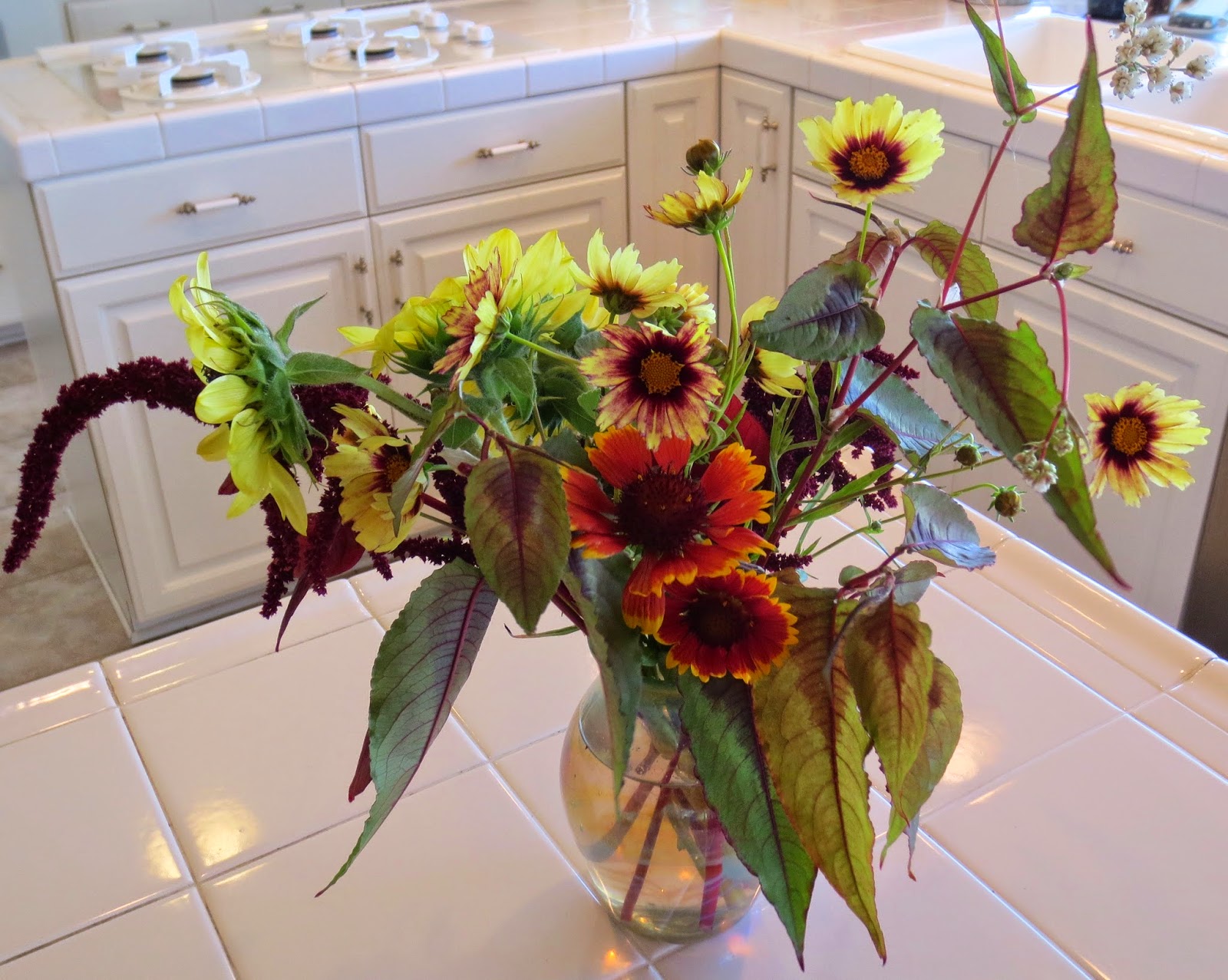 |
| A single rosette in the decorative pot I picked up at the Spring Garden Show at South Coast Plaza |
 |
| 2 rosettes in a pot marking the transition from the side yard to the backyard |
 |
| A clump of 'Fred Ives' in the backyard border |
After looking into 'Fred Ives' parentage, I realized that I also have the parent plants in my garden.
 |
| This Graptopetalum paraguayense was part of a 6-pack I planted in my new succulent border |
 |
| I believe this is an Echeveria gibbiflora, although it didn't have a label when I purchased it |
I love the various hues 'Fred Ives' takes on based under different growing conditions. It can handle anything from full sun to partial shade. In semi-shady spots, like the one occupied by the pot in the picture at the top of the post, grayish-green and turquoise tones dominate but, in sunnier settings, like those shown in the second and third photos, pinkish-bronze tones appear.
Most of my plants are between 6 and 8 inches (15-20 cm) tall but one, in a large pot receiving morning shade and afternoon sun, is more than a foot (30.5 cm) tall and wide.
I discovered that this plant had produced an elongated stem that reached down behind the pot. It detached easily when I tugged it upward. Even by succulent standards, the plant has a reputation for easy reproduction. The piece I removed already had lots of hairy pink roots.
I was more surprised to find a tiny plant developing on a shriveled leaf that had fallen off the plant in the backyard border.
The succulent flowers too. My largest plant produced sprays of small yellow flowers on long stems earlier this year.
 |
| The flowers are shown in this picture taken in late April |
Like most succulents, it's drought-tolerant, although some on-line sources claim that it grows faster with extra water. It's said to handle over-watering well, which allows it to be combined with plants with greater water needs, as in the case of the plant in my backyard border. According to San Marcos Growers, it tolerates low temperatures in the 25-30F (-3.9 to -1C) range.
x Graptoveria 'Fred Ives,' a native of Mexico, is my contribution to the favorite plants meme hosted by Loree of danger garden.
All material © 2012-2014 by Kris Peterson for Late to the Garden Party











































